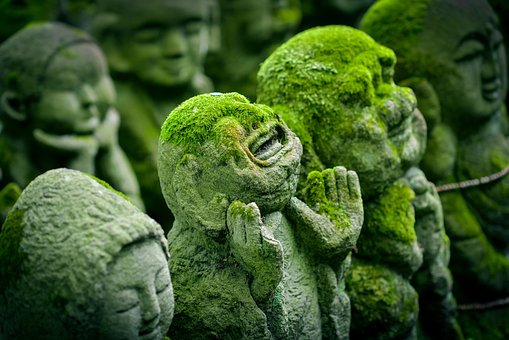Dressing up as a witch for Halloween can be fun these days, but in the past, being accused of being one could lead directly to the gallows or the stake. The courts have seen thousands of witchcraft trials in Europe over the centuries, and harsh laws were passed to suppress its practice. The beginning of colonization in America corresponds to the end of the wave of this murderous madness which mainly targeted women and, in Canada, the words “magic” and “witchcraft” were not removed from its Criminal Code until 2018.
When one thinks of the great witch trials, those of the Salem witches quickly come to mind. More than 200 people were charged and 20 executed in North America’s largest — and deadliest — witch hunt, shattering colonial towns in Massachusetts in 1692 and 1693. Its victims were 14 women and six men: 19 were hanged, and one man was crushed to death by heavy rocks gradually added to his body to force him to enter a plea.
On the occasion of Halloween, librarian Ana Rogers-Butterworth organized a modest exhibit at the McGill University Law Library on witchcraft and the law. Exhibiting rare books from its various university libraries, some dating from the 16e and 17e centuries, it recalls the fear aroused by witchcraft at one time.
You can leaf through the very thick volume of transcripts of testimony from the Salem trials.
It will be easy to see that the rules of law and evidence have changed since the beginnings of the American colony. Testifying that a neighbor gave us an evil look was admissible at trial, as was “spectral evidence”, that is, to say that one had seen the form or “spirit” of the accused in a dream. A four-year-old child was even accused and imprisoned for some time, which is obviously no longer possible these days.
The legacy of these trials is frequently unearthed: accused in the Salem trials, Elizabeth Johnson Jr. was only exonerated in July 2022, barely three months ago – 329 years after being found guilty of witchcraft.
In England, the first anti-witchcraft law dates from 1542, courtesy of King Henry VIII. This legislation made pacts with the devil and the act of invoking spirits a capital crime.
The exhibition also reminds us that the year 1895 witnessed the last ‘witch’ to be burned in Ireland. But the horrific death of Bridget by the flames was not the fault of the authorities, but of her husband, Michael Cleary. He did not accuse her of witchcraft, but maintained that she had been abducted by fairies and replaced by one of their own. His accusations did not convince the judge, who sent him to the penitentiary for murder. After being released 15 years later, the man decided to keep a low profile by immigrating…to Canada.
Closer to home, the name of Corriveau — Marie-Josephte Corriveau, her real name — has been associated with witchcraft. The woman was actually accused and sentenced to death in 1763 for the murder of her husband. But the treatment she subsequently received, with the famous iron “cage” where her corpse was exhibited near Lévis, marked the imagination of the population and contributed to this association with the Evil One.
Historians also report the trial of Anne Lamarque, a Montreal bar owner. Accused of several crimes, including witchcraft in 1682, she escaped unscathed.
This was also the case of Jean Campagna, a farm worker from Beaubassin, in colonial Acadia, accused in 1684. He was accused of various things, including the death of the seigneur’s wife and the loss of part of the cattle of a local family. At the end of his trial held in Quebec the following year, the man was acquitted.
The Canadian Criminal Code also contained anti-witchcraft provisions until 2018.
Except that this law passed in 1892 took for granted that spells and enchantments do not exist. On the other hand, we wanted to protect citizens against those who falsely claimed to be sorcerers and witches, seeking to sell their services for cash.
In short, the practice of “witchcraft” was not illegal, but pretending to have supernatural powers to defraud was — and still is.
The last “witch” to be charged under section 365 of the Criminal Code was Tiffany Butch, of Timmins, Ontario, who called herself “the white witch of the North”. The 33-year-old woman, charged two days before the Criminal Code section was repealed, defended herself by saying she had never claimed to be a witch or illegally demanded money for her services. The Crown eventually dropped the charges.
In Quebec, in 2014, Yacouba Fofana pleaded guilty to having “fraudulently affected to exercise or employ any magic, sorcery, enchantment or conjuration” in Quebec and Lévis. He placed classified ads in the newspapers where he claimed to be a “specialist in urgent and difficult cases, personal attraction and disenchantment”.
These scams are still illegal today, but the article was repealed in 2018, the legislator judging that the provisions on fraud were sufficient to punish these crimes, without the need to invoke witchcraft.
To see in video
We would like to say thanks to the writer of this article for this awesome content
The witch hunt through laws and trials
Our social media profiles here , as well as other related pages herehttps://nimblespirit.com/related-pages/

